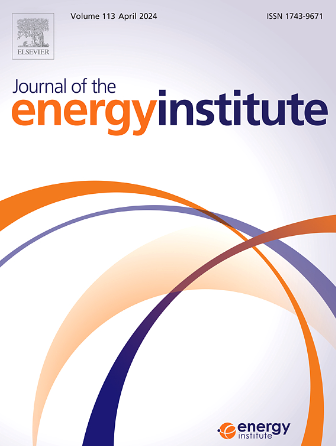温度依赖性物种形成数据对RP-3煤油HyChem模型发展的影响
IF 5.6
2区 工程技术
Q2 ENERGY & FUELS
引用次数: 0
摘要
RP-3 煤油等多成分液体燃料的燃烧化学建模面临着复杂的挑战。最近提出的 HyChem 方法提供了一种基于物理的建模途径,模型受到实验标样数据的限制,然后通过全局燃烧特性进行验证。在适当温度和/或反应时间下获得的中间标示数据对 HyChem 模型的开发至关重要,但其影响尚未完全阐明。本研究的主要目的是调查与温度相关的标示数据对 HyChem 模型开发的影响。在温度范围为 1000 K-1355 K 的流动反应器系统中进行了热解和氧化实验,以确定 RP-3 分解过程中关键中间物种的分布特征。根据在不同温度下进行的实验所获得的标示数据,开发了多种 HyChem 模型。随后,利用全局燃烧特性(特别是点火延迟时间和层流火焰速度)对这些模型进行了验证。HyChem 模型是利用不同温度下的标样数据集开发的,因此其燃料分解子模型中的化学计量系数和速率系数各不相同。尽管存在这些差异,但大多数模型的预测结果与全球燃烧特性的实验测量结果非常一致。本研究的上述发现可以帮助研究人员在开发 HyChem 模型时选择和确定获取标本数据的实验条件。本文章由计算机程序翻译,如有差异,请以英文原文为准。
Impact of temperature-dependent speciation data on the development of HyChem Model for RP-3 kerosene
Modeling the combustion chemistry of multi-component liquid fuels, such as RP-3 kerosene, faces intricate challenges. A recently proposed HyChem approach offers a physics-based modeling path, with models constrained by experimental speciation data followed by validation by global combustion properties. Intermediate speciation data obtained under appropriate temperature and/or reaction time are crucial for the HyChem model development, yet their impact has not been fully elucidated. The primary objective of the present study was to investigate the impact of temperature-dependent speciation data on the development of HyChem models. Pyrolysis and oxidation experiments were conducted in a flow reactor system over a temperature range of 1000 K–1355 K to characterize the distribution of critical intermediate species during RP-3 decomposition. Multiple HyChem models were developed based on speciation data obtained from experiments conducted at various temperatures. These models were subsequently validated using global combustion properties, specifically ignition delay time and laminar flame speed. The HyChem models were developed using speciation datasets from various temperatures, resulting in different stoichiometric and rate coefficients in their fuel decomposition submodel. Despite these differences, most models showed remarkably consistent predictions that closely aligned with experimental measurements of global combustion properties. The above findings in the present study may relieve the researchers in the selection and determination of experimental conditions for obtaining speciation data to the development of HyChem models.
求助全文
通过发布文献求助,成功后即可免费获取论文全文。
去求助
来源期刊

Journal of The Energy Institute
工程技术-能源与燃料
CiteScore
10.60
自引率
5.30%
发文量
166
审稿时长
16 days
期刊介绍:
The Journal of the Energy Institute provides peer reviewed coverage of original high quality research on energy, engineering and technology.The coverage is broad and the main areas of interest include:
Combustion engineering and associated technologies; process heating; power generation; engines and propulsion; emissions and environmental pollution control; clean coal technologies; carbon abatement technologies
Emissions and environmental pollution control; safety and hazards;
Clean coal technologies; carbon abatement technologies, including carbon capture and storage, CCS;
Petroleum engineering and fuel quality, including storage and transport
Alternative energy sources; biomass utilisation and biomass conversion technologies; energy from waste, incineration and recycling
Energy conversion, energy recovery and energy efficiency; space heating, fuel cells, heat pumps and cooling systems
Energy storage
The journal''s coverage reflects changes in energy technology that result from the transition to more efficient energy production and end use together with reduced carbon emission.
 求助内容:
求助内容: 应助结果提醒方式:
应助结果提醒方式:


